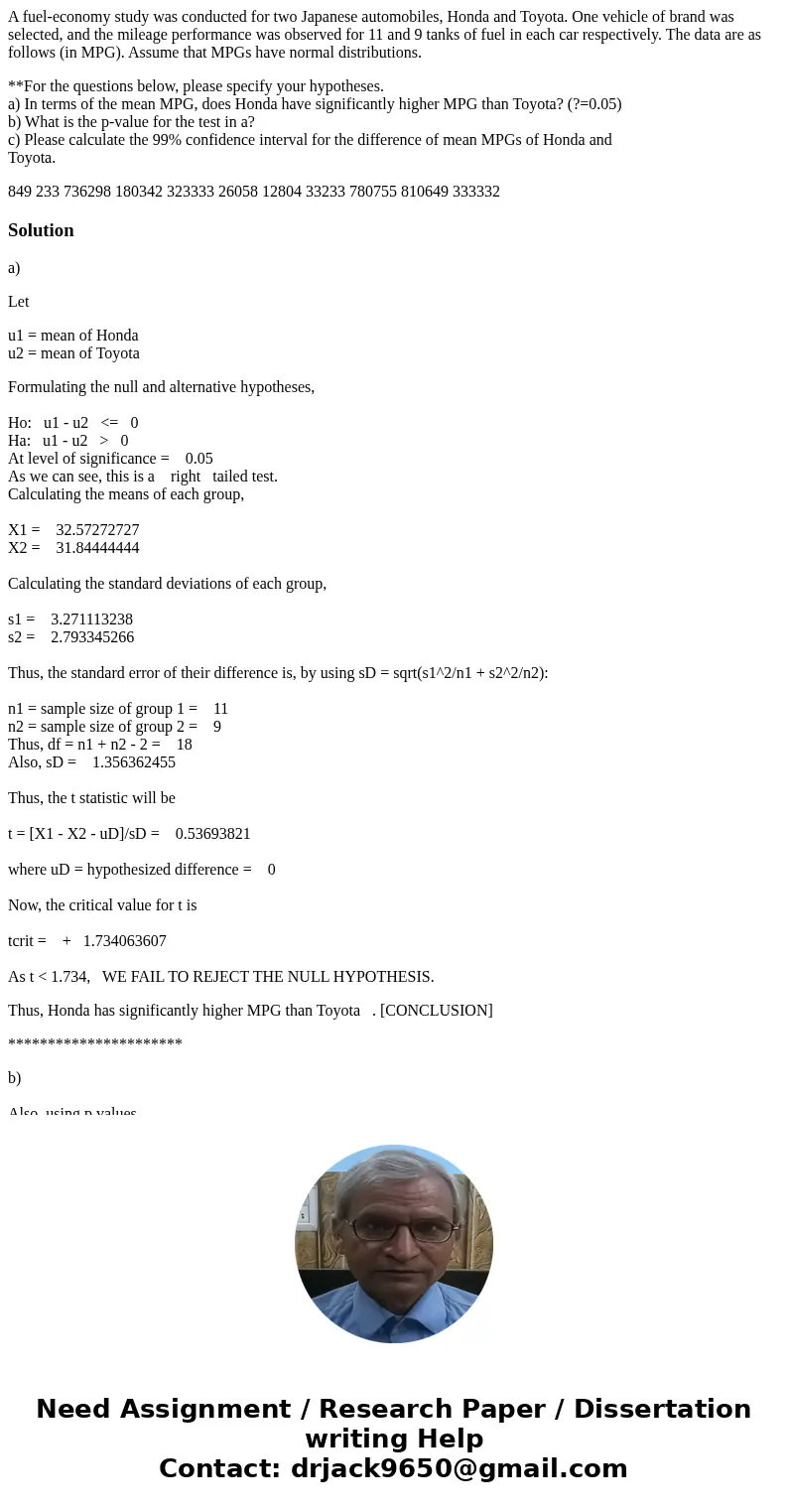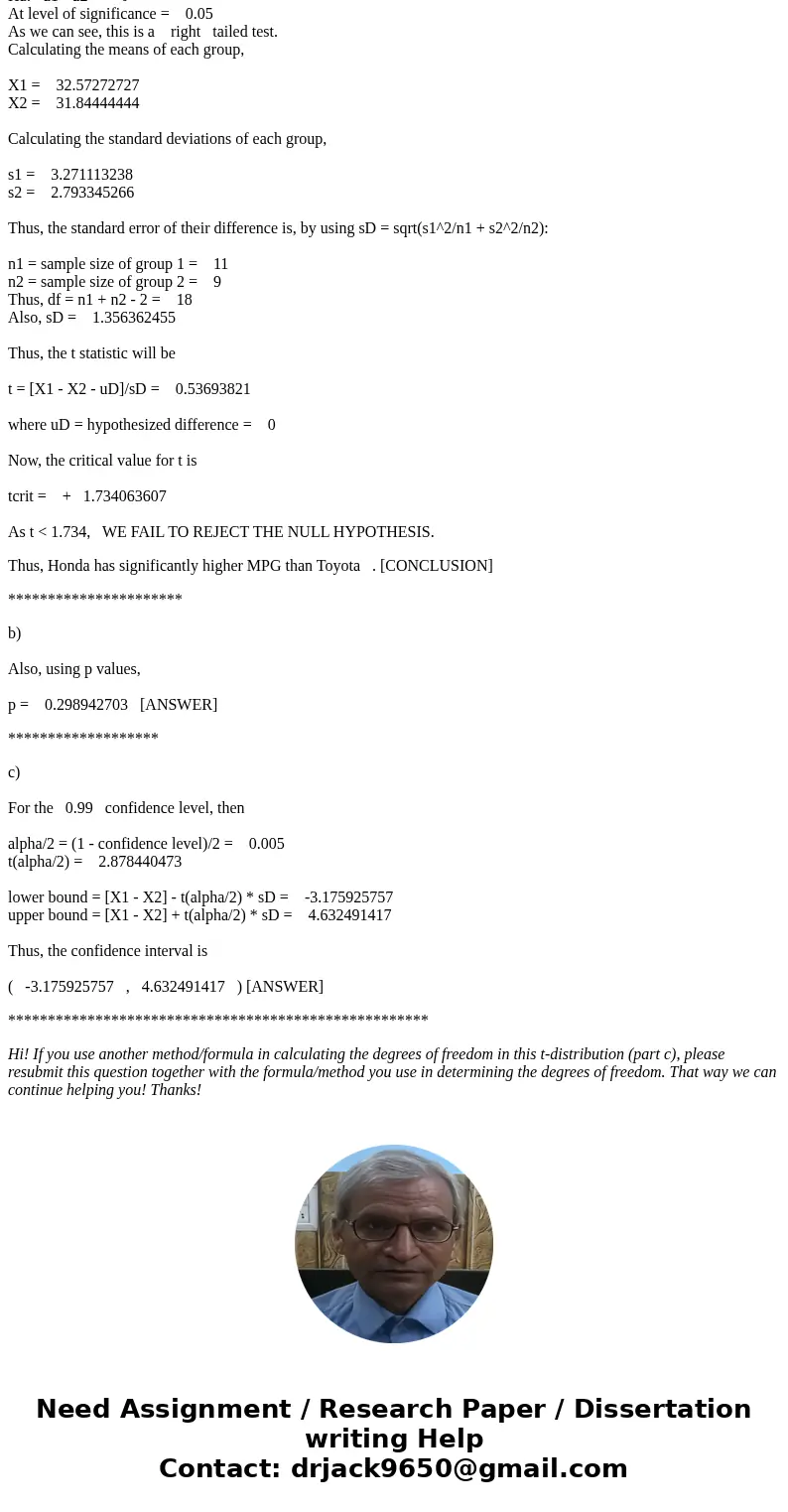A fueleconomy study was conducted for two Japanese automobil
A fuel-economy study was conducted for two Japanese automobiles, Honda and Toyota. One vehicle of brand was selected, and the mileage performance was observed for 11 and 9 tanks of fuel in each car respectively. The data are as follows (in MPG). Assume that MPGs have normal distributions.
**For the questions below, please specify your hypotheses.
a) In terms of the mean MPG, does Honda have significantly higher MPG than Toyota? (?=0.05)
b) What is the p-value for the test in a?
c) Please calculate the 99% confidence interval for the difference of mean MPGs of Honda and
Toyota.
Solution
a)
Let
u1 = mean of Honda
u2 = mean of Toyota
Formulating the null and alternative hypotheses,
Ho: u1 - u2 <= 0
Ha: u1 - u2 > 0
At level of significance = 0.05
As we can see, this is a right tailed test.
Calculating the means of each group,
X1 = 32.57272727
X2 = 31.84444444
Calculating the standard deviations of each group,
s1 = 3.271113238
s2 = 2.793345266
Thus, the standard error of their difference is, by using sD = sqrt(s1^2/n1 + s2^2/n2):
n1 = sample size of group 1 = 11
n2 = sample size of group 2 = 9
Thus, df = n1 + n2 - 2 = 18
Also, sD = 1.356362455
Thus, the t statistic will be
t = [X1 - X2 - uD]/sD = 0.53693821
where uD = hypothesized difference = 0
Now, the critical value for t is
tcrit = + 1.734063607
As t < 1.734, WE FAIL TO REJECT THE NULL HYPOTHESIS.
Thus, Honda has significantly higher MPG than Toyota . [CONCLUSION]
**********************
b)
Also, using p values,
p = 0.298942703 [ANSWER]
*******************
c)
For the 0.99 confidence level, then
alpha/2 = (1 - confidence level)/2 = 0.005
t(alpha/2) = 2.878440473
lower bound = [X1 - X2] - t(alpha/2) * sD = -3.175925757
upper bound = [X1 - X2] + t(alpha/2) * sD = 4.632491417
Thus, the confidence interval is
( -3.175925757 , 4.632491417 ) [ANSWER]
*****************************************************
Hi! If you use another method/formula in calculating the degrees of freedom in this t-distribution (part c), please resubmit this question together with the formula/method you use in determining the degrees of freedom. That way we can continue helping you! Thanks!


 Homework Sourse
Homework Sourse